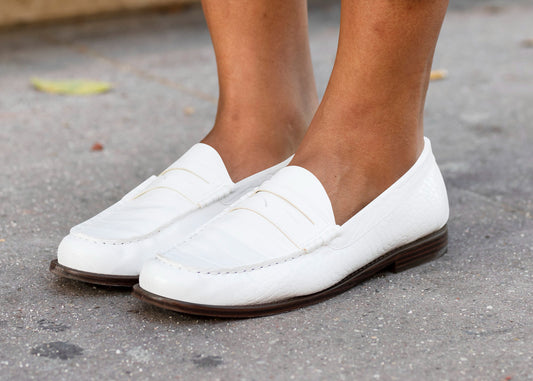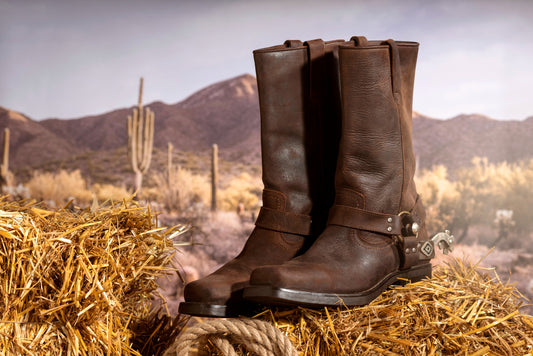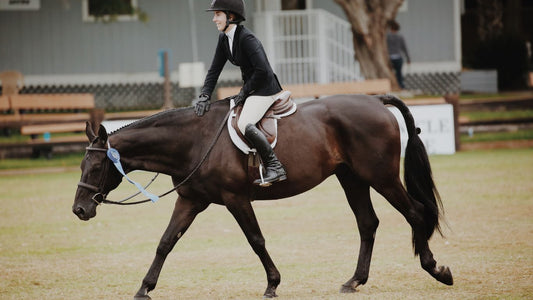Athletic Shoe Care - A Comprehensive Guide

Are you an athlete, fitness enthusiast or simply someone who wears athletic shoes on a regular basis? If so, you know how important it is to keep your shoes in good condition. Whether you use them for running, training, or any other sport, proper care can make a huge difference in their performance and lifespan.
With that being said, let us help you keep your athletic shoes in top shape with our comprehensive guide on athletic shoe care.
What Materials Are Commonly Used for Athletic Shoes?

There are many types of athletic shoes, thus, materials used in their construction differ based on the sport they're designed for, their style, and brand. The main parts of a shoe, including athletic sneakers and running shoes, include the upper, midsole, and outsole.
- Upper materials: This refers to the top part of the shoe that covers the foot. It's mainly made from synthetic materials such as mesh for breathability and flexibility, especially in running shoes. Leather is often preferred for its durability in shoes like basketball sneakers.
- Midsole materials: The midsole is the cushioning part between the upper and the outsole. Materials like EVA (ethylene-vinyl acetate) are commonly used because of their lightweight and shock-absorbing properties. Polyurethane is another option, offering more durability and stability, though it is a bit heavier.
- Outsole materials: The outsole is the hard bottom part of the shoe that makes contact with the ground. Rubber is generally used in this part of the shoe for its grip and wear-resistant properties.
- Insole materials, such as foam or gel, may also be present for additional cushioning and support.
Not to mention, laces are an essential part of athletic shoes, made from materials such as nylon or cotton for durability and strength. They secure the shoe onto your foot and can be adjusted for comfort.
Suede and nubuck can also be seen in some athletic shoes, providing a stylish and durable option. Understanding the materials that make up your shoes can help you take better care of them.
Cleaning Techniques for Athletic Shoes
Given that different materials are used in athletic shoes, it's important to approach cleaning with care.
Here are some of the things you need to have on your shoe-cleaning checklist:
- shoe brush
- mild detergent or shoe cleaning solution
- water
- sponge
- paper towels/newspaper
To give you a headstart, here are general techniques you can use to clean your athletic footwear:
- Remove dirt and stains: Start by using a dry sneaker cleaning kit brush to remove any loose dirt from the upper, midsole, and outsole of your footwear.
- Create a cleaning solution: Next, prepare a sneaker cleaning solution. This could be a mild detergent mixed with water or a specialized shoe cleaner. Ensure that the solution is all-purpose, meaning it's safe to use on all the materials that make up your athletic shoes.
- Scrub the shoes: Dip a brush or cloth into the cleaning solution, then scrub the shoes gently but thoroughly to remove any stains. Pay extra attention to areas that are particularly dirty.
- Wipe off the solution: After scrubbing, take a clean, damp cloth and wipe off the cleaning solution from your footwear. Make sure not to leave any residue behind as it can affect the shoe's material and potentially cause discoloration or dye bleeding.
- Rinse (if necessary): If your shoe and sneaker cleaner is particularly strong, or if you've used a lot of it, you may need to rinse your shoes under lukewarm water to remove any remaining product.
- Dry your shoes: Dry your shoes thoroughly before storing them. Avoid direct sunlight or high heat as they can damage the shoes. Instead, stuff your shoes with paper towels or newspaper to absorb moisture from inside and let them air dry.
Remember, proper cleaning extends the life of your athletic shoes, so it's worth investing in suitable cleaning products and taking the time to clean your footwear regularly.
If you don't want the hassle of buying shoe cleaning products separately, you can take advantage of Stone and Clark's All-in-One Sneaker Cleaning Kit. Our shoe care kit includes all the necessary items for a thorough and gentle cleaning of your athletic shoes, including a cleaner, deodorizer, protector, brushes, and microfiber towel.
How to Properly Store Your Athletic Shoes
Aside from cleaning, there are a few other key considerations to ensure the longevity of your athletic shoes. Here are some essential tips on storing your footwear:
- Keep them dry: After cleaning or wearing your shoes, ensure they are completely dry before storing them. This helps to prevent the growth of mold and mildew, which can degrade the materials and create unpleasant odors.
- Leather shoes care: Leather shoes should be treated with a conditioner every now and then to prevent the material from drying out and cracking. The conditioner moisturizes the leather, providing it with the necessary oils to stay supple and resistant.
- Use shoe trees: Shoe trees can help maintain the shape of your shoes, preventing creases and wrinkles from developing. This is particularly useful for athletic shoes that are made from materials like leather and suede.
- Material should breathe: Breathable materials should not be stored in plastic bags or other non-breathable containers as this can trap moisture and prevent the material from drying out properly. Instead, use a shoe bag made of cloth or another breathable material.
- Suede shoes care: Suede shoes require special care as they can easily become discolored or damaged. Use a suede brush to remove dirt and a suede eraser for any stubborn stains. Regular use of a suede protector spray can also help to repel water and prevent stains.
Sneaker care can be a weekly routine depending on how often you wear them. Even if you don't wear them that often, a quick dust-off and inspection can prevent potential issues from escalating.
Weather Specific Care

Different shoe materials react differently to different types of weather, so it's essential to take extra care during certain conditions.
Here are some shoe care products you may need depending on the weather:
- Mink Oil
- Deodorizer
- Water and Stain Repellent
- Leather Spray
- Crepe Brush
- Polish
- Cleaner and Conditioner
Depending on the type of weather, these products can help protect your footwear and keep them looking their best.
Rainy Season
Mink oil is an excellent way to waterproof your shoes and protect them from the rain. Before applying, make sure your shoes are clean and dry. Use a cloth or brush to apply the mink oil evenly over the material, then let it sit for a few minutes before wiping off any excess oil. This will help repel water and prevent staining.
Hot and Humid Climate
In hot and humid weather, shoes can be prone to developing unpleasant odors. To prevent this, use a deodorizer spray specifically designed for footwear to eliminate any smells and keep your shoes smelling fresh. Also, make sure to let your shoes air out after wearing them in these conditions.
Cold Weather
Leather is particularly vulnerable in cold weather as it can dry out and crack. To prevent this, use a leather protector spray before wearing your shoes in cold weather. This will help keep the material moisturized and protected from the elements.
Athletic Shoes Sole Maintenance

Whether you are playing tennis, running, or hitting the gym, the sole of your athletic shoes is prone to wear and tear.
Here are some tips to help maintain the sole of your sports footwear:
- Rotate your shoes: It's essential to rotate your athletic shoes regularly. This helps distribute pressure evenly on different parts of the shoe, preventing excessive wear and extending their lifespan.
- Check for damage: Regularly inspect the soles of your shoes for any signs of wear and tear, such as cracks or thinning areas. If you notice any damage, it's best to get them repaired immediately to prevent further damage.
- Clean after use: After an intense workout or game, make sure to clean off any dirt or debris from the soles of your shoes. This will help prevent the dirt from getting trapped in the material and causing damage.
- Use a shoe brush: A soft-bristled shoe brush is an excellent tool for removing any stubborn dirt or debris from the soles of your athletic shoes. Avoid using harsh brushes that can damage the material.
Specialized Care for Running, Basketball, Cross-Training, and Tennis Shoes
Running, basketball, cross-training, and tennis shoes all have unique care requirements due to the specific types of stresses they are designed to handle.
Running Shoes
Running shoes are built for forward motion, and they have extra cushioning to absorb the impact of each stride. Over time, this cushioning can degrade, affecting the shoe's performance and potentially leading to discomfort or injury.
To maintain the cushioning for as long as possible, avoid exposing your running shoes to extreme temperatures which can harden the foam. Additionally, running shoes should be replaced every 300-500 miles, as their cushioning ability decreases over time.
Basketball Shoes
Basketball shoes are designed to provide stability and support for dynamic and high-impact movements, so they usually have a stiffer sole and high ankle support.
Proper care for these shoes would include regular inspections for signs of wear and tear in these areas. If the soles are worn unevenly or the ankle support is significantly less rigid, it might be time for a new pair.
Cross-Training Shoes
Cross-training shoes, suitable for a variety of activities, need to provide good support and flexibility. Check the overall structure of the shoes regularly, and ensure that they're free from extreme wear and tear.
Special attention should be given to the midsoles—the area that provides cushioning and stability. If they're overly compressed and don't bounce back, it's time to replace your cross-training shoes.
Tennis Shoes
Tennis shoes are designed to provide grip and stability for quick side-to-side movements and abrupt stops. To maintain their performance, keep the soles clean and free from dirt or debris that can affect traction. Additionally, regularly check the toe guard area for any signs of wear and tear, as this area is prone to damage during intense matches.
Make sure to read our article, "How to Clean Tennis Shoes" for specific care tips tailored to tennis footwear.
DIY vs Professional Shoe Repair
In some cases, your athletic shoes may require professional repair or cleaning. This could be due to significant damage or specific materials that need specialized care.
However, if it's a minor issue like a loose sole or scuff marks on the material, you can easily fix these at home with a few simple tools and products. Just make sure to follow instructions carefully and use the right products for the specific material of your shoes.
It's also important to note that attempting DIY repairs on expensive or high-end athletic shoes may risk further damage, so it's best to consult a professional in these cases.
In general, we always recommend seeking professional help for any major repairs to ensure the longevity and performance of your sports footwear.
Key Takeaways
Athletic shoe care is more than cleaning sneakers when they get dirty. It involves proper storage, regular athletic shoe maintenance, and knowing the specific care needs of different types of athletic shoes.
By following these tips and using recommended products, you can keep your sports footwear in top condition and extend its lifespan for optimal performance.
Remember to rotate your shoes regularly, clean them after use, and seek professional help when necessary. With proper care, you can continue enjoying the support and comfort of your athletic shoes for longer.





